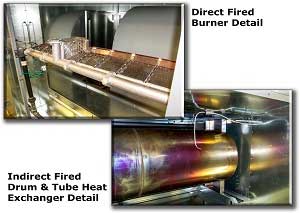9 Reasons Commercial Kitchen Ventilation Requires Specialization

Under Pressure: Is Building Air Pressure Really Important

8 Reasons Swimming Pool Ventilation Requires Specialization
Kitchens provide unique challenges for the commercial HVAC contractor because how air is handled in a restaurant or industrial kitchen affects comfort levels and air quality throughout the building. HVAC equipment and systems must be as efficient, reliable and safe as possible, but there is no one-size-fits-all HVAC solution for commercial kitchens. Here are nine reasons commercial kitchen ventilation requires specialized solutions:
Kitchen air is contaminated with grease, fumes, smoke and food odors.
Smells from baking cinnamon buns or frying bacon can be enticing, but other kitchen odors like stale grease, burning food, frying onions or curry can be overpowering to guests when they walk into a restaurant. An effective ventilation system is designed to keep cooking odors to a minimum, and remove smoke, fumes and airborne grease from the kitchen. The different foods, cooking methods and equipment of an establishment must be considered when designing the ventilation system.
Kitchen size and styles vary.
Some restaurant kitchens are cramped and closed off from the dining room, however, large open kitchens where guests can see, hear and smell everything the cooks are doing have become more common. These two setups—and every size and type of commercial kitchen in between—require different ventilation solutions.
Style and amount of cooking will vary.
The kitchen area of a quick serve restaurant, where most items come in pre-cooked and are simply reheated, would have different ventilation needs than a kitchen where everything is cooked from scratch. A kitchen where a lot of deep-frying is done will have different ventilation needs from a kitchen used mostly for baking.
Two very different tasks are performed in commercial kitchens.
In addition to the cooking equipment that gives off heat, smoke, grease and odors, commercial kitchens usually encompass a dishwashing area too. To sanitize dishes, these machines get very hot and often release clouds of steam when opened. This means there is an area of high humidity within the kitchen. The proximity of the cooking area to the dishwashing area will affect the design of the ventilation system. Generally, two different types of exhaust hoods are required for the two areas.
Workload can be all or nothing.
From 4 p.m. to 10 p.m. the kitchen of a fine dining restaurant is a beehive of activity, full of frantic workers, with ovens, griddles, burners, and steam kettles all going strong. The dishwasher is constantly running too, doing load after load. But that same kitchen at other times may be quiet and occupied by only one or two people doing prep work. The HVAC system must be designed to adjust from peak cooking times to off hours, possibly utilizing variable speed equipment.
Commercial kitchens are hot.
Kitchen worker comfort must be considered, and balanced against the comfort of diners and wait staff. A poorly ventilated restaurant may have cold, drafty spots near the door yet be uncomfortably hot for kitchen staff. Also consider that staff may be coming and going from kitchen to dining room and from kitchen to the outside, affecting airflow. Complicating things even further is that commercial kitchens also contain cold storage such as refrigerated drawers, walk-in coolers, and freezers. It can be a challenge to keep this cooling equipment working efficiently in an overly hot kitchen.
There are multiple sources of moisture.
Boiling cooking water, dishwashers, steam tables, and daily cleaning all create moisture in commercial kitchens. It must be controlled to prevent mold growth and corrosive damage to the building. Moisture can condense quickly on cool surfaces like windows, refrigerator doors, exit doors and skylights.
It’s expensive.
Ventilation equipment can be some of the most expensive equipment in a commercial kitchen. In addition, a restaurant’s HVAC system can account for as much as a quarter of a restaurant’s total energy usage. A food service operation’s HVAC system should be designed to be as efficient as possible, without sacrificing effectiveness.
Rules, codes, standards and regulations.
Commercial kitchen ventilation systems are highly regulated. A system must meet codes for sanitation and hygiene, fire control and suppression, indoor and outdoor air quality and insurance regulation. Some homework is required to learn all the requirements that apply to a particular commercial kitchen because rules may vary from one municipality to another.
As a commercial HVAC contractor, you’ll want to work with manufacturers who have experience with equipment for commercial kitchens. Ask the business owner, kitchen manager or executive chef a lot of questions about the operation so you can tailor the ventilation system recommendations to meet the needs of the individual restaurant or food service operation. Treat all commercial kitchen clients the way you’d like to be treated when you dine out: accommodate their special needs or requests, deliver the best product you can, and always provide 5-star service.




